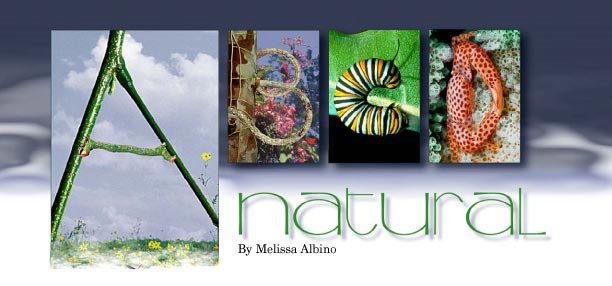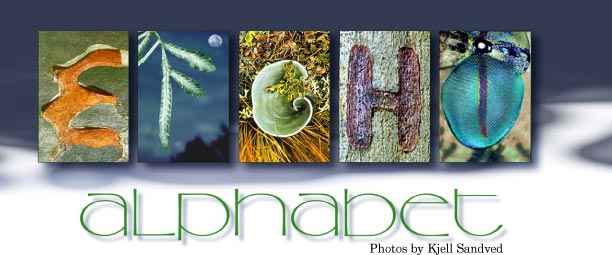New York Conservationist Magazine 2004
 acked away in the corner of a dusty attic of the Smithsonian Institute was an old cigar box. Inside this box was a moth. On the wing of this moth, nature had placed a perfect letter "F". In 1960, Kjell (pronounced "shell") Sandved came to the United States from Norway to conduct research for an encyclopedia he was publishing. While studying animal behavior at the Smithsonian, Sandved came across the old cigar box. When he saw the moth, something resonated within him. He was so impressed with the image that he took a photograph of the wing, and hung it above his desk for more than a year. After looking at this image every day, an idea began to take shape. Sandved realized that if he found one letter, there must be more. He looked around to see if other photographers had done similar work, but he found nothing. So began a 25-year journey that would take Kjell Sandved all over the world. acked away in the corner of a dusty attic of the Smithsonian Institute was an old cigar box. Inside this box was a moth. On the wing of this moth, nature had placed a perfect letter "F". In 1960, Kjell (pronounced "shell") Sandved came to the United States from Norway to conduct research for an encyclopedia he was publishing. While studying animal behavior at the Smithsonian, Sandved came across the old cigar box. When he saw the moth, something resonated within him. He was so impressed with the image that he took a photograph of the wing, and hung it above his desk for more than a year. After looking at this image every day, an idea began to take shape. Sandved realized that if he found one letter, there must be more. He looked around to see if other photographers had done similar work, but he found nothing. So began a 25-year journey that would take Kjell Sandved all over the world.
Sandved had no background in photography when he embarked on this project. He took classes and read books. He made learning his top priority. Eventually, he gained the photographic expertise and experience necessary to lecture on the topic at the Smithsonian himself. Sandved found that equipment available at the time didn't lend itself to photographing insects. Through trial and error, he created his own macrophotography setup. And despite all the changes in technology and photography since the 1960s, he has never replaced his camera. Even with all the right equipment, photographing some subjects, like live butterflies, is very tricky. The trick is to approach slowly, says Sandved, and not to make any lateral movements. Each subject must be photographed from many different angles and only about 1 of every 200 photos meets Sandved's high standards. I have never hurt or killed a butterfly to get the shot, says Sandved. As you can imagine, Mr. Sandved's quest to find the entire alphabet first on the wings of butterflies and moths, then in other natural objects has taken him to the far reaches of the globe, including New York State. Finding and photographing certain "letters" proved more difficult than others. In general, the symmetrical letters, such as "O" were the easiest to find, while the letter "R" was the most problematic. He often found photographic subjects in strange places, and sometimes he happened upon them unexpectedly. For example, while out in the field photographing orchids, he put his camera down and looked up to find himself face-to-face with a viper in the form of the letter "Q".
"Nature is so rich and unique, and different
every time you walk into it, " said Sandved.
"Most people go through life without really seeing. "
It is Kjell's hope that, after viewing his
work, people will pay a little more attention to the world around them. Now that he has completed his most significant work, Sandved plans on traveling and seeing more of the world, at his pace.
|

A: Inchworm's morning stretch, U.S.
B: Vine with ants, Thailand
C: Larva lunch, Brazil
D: Red spotted crab, Caribbean

E: Peeling Eucalyptus bark, Java
F: Leaf in full moon, Indonesia
G: High altitude lichen, South America
H: Carved in the bark, U.S.
I: "I" in an eye of a fly, U.S.
|
|

